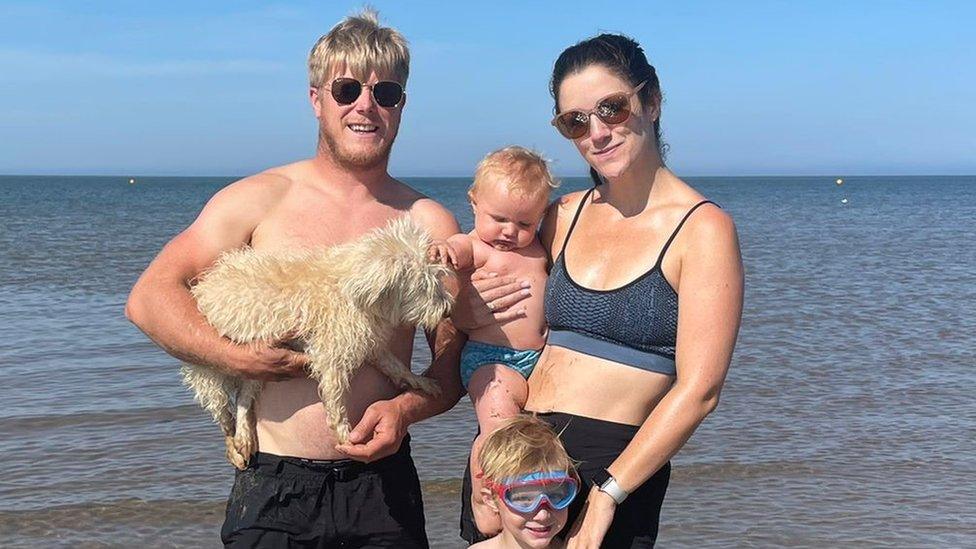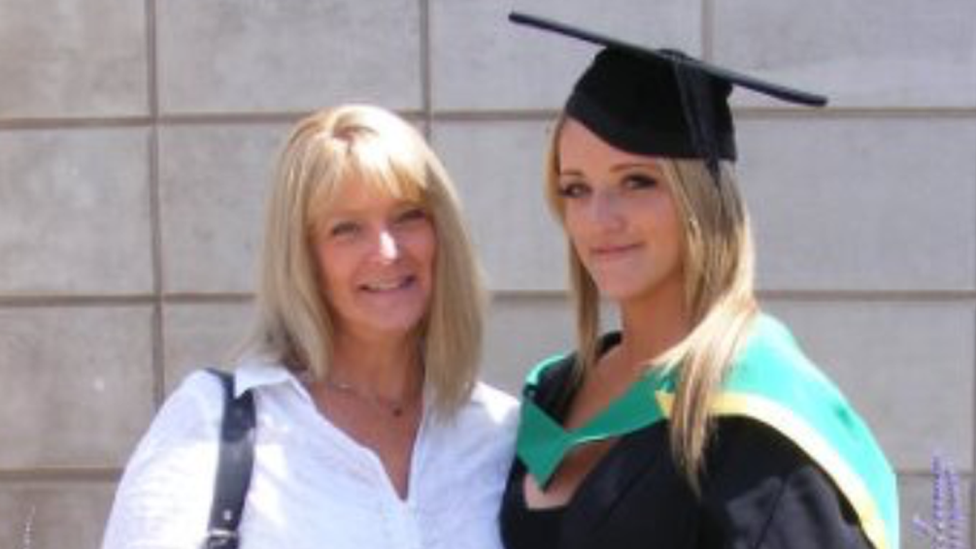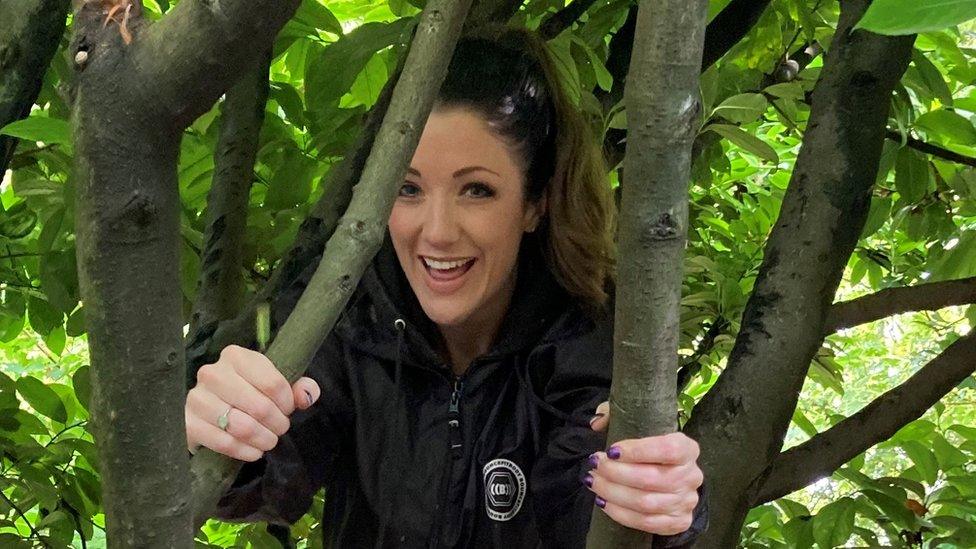Witchford: Family's legacy hope after death of teacher, 32
- Published

Mrs Hancock loved family holidays with her husband Ed and son, Dylan, and daughter Taylor (pictured in arms)
A family hopes to create a legacy for a 32-year-old primary school teacher who died from a brain aneurysm after collapsing at a fitness class.
Katy Hancock, from Witchford, Cambridgeshire, was taken to hospital and died a week later.
Siobhan Taylor, her mother, said Mrs Hancock was the "healthiest and fittest of the entire family".
She was "passionate about exercise" and they hoped to build something around fitness where she taught, she added.

Katy studied criminology and psychology at Nottingham Trent University, her mother Siobhan Taylor said
Mrs Hancock was a teacher at Cottenham Primary School and ran fitness classes in her spare time. She was married to Ed Hancock and a mother to Dylan, four and Taylor, two.
On 25 January, Mrs Hancock was taking a trampoline class in Chatteris when "she staggered, collapsed and went peculiar", Mrs Taylor said.
"It was a complete shock and totally out of the blue."
Paramedics thought she "hadn't eaten and drunk enough and had over-exercised", she added.
"Sian, her sister and a nurse, was with her - she was adamant her behaviour wasn't normal, so wanted her checked fully out."
She was taken to Hinchingbrooke Hospital and then to Addenbrooke's in Cambridge for surgery following a CT scan.
"When they did the surgery, she had another massive bleed, and at that point it didn't look hopeful," said Mrs Taylor.
"She did hang on for another week and died on 1 February."

Katy having a nap on a holiday with her father, Chris
Mrs Taylor said the whole family, including her father Chris Taylor and sisters Sian Adomeit and Hannah Catley, "were terribly devastated".
"I can't see how people live with the pain of losing a child, but you have got to go on as I have five, soon to be six grandchildren, who I help to look after.
"Katy was the healthiest and fittest of the entire family.
"She was very conscious of what she ate, was very passionate about exercise, and of all the people who should drop down dead, she'd be the last person you'd expect."
Mrs Taylor believes she was born with the aneurysm, external, which is a bulge in a blood vessel caused by a weakness in the vessel wall.
"At any point she could have had a CT scan and it might have been picked up and repaired, but they're symptomless, so there's no way of knowing it was there," said Mrs Taylor.

Her family said Katy was a "force of nature" who loved being active
"She was probably the most honest person I knew. She was very straight talking, she was very funny, had an incredible memory, was very witty and very quick with her retorts," she said.
"She always had the right answers, she was conscientious, hard-working and was never off sick."

If you are affected by the issues covered in this article, help and support is available at BBC Action line.

The family decided to raise funds for "Katy's Kids' Education Fund" after being inundated with flowers.
More than £21,000 has been raised so far, with the money set to buy two benches at Milton Country Park and The Orchard, Haddenham, as well as "something fitness-based, like a climbing wall" at her school.
The rest would be spent on her children's further education, "as that was what she was passionate about", her mother added.

What is a brain aneurysm?
An aneurysm is a bulge in a blood vessel caused by a weakness in the blood vessel wall, usually where it branches
Aneurysms can develop in any blood vessel in the body, the two most common places are the brain and the artery
Symptoms of a burst brain aneurysm including a sudden agonising headache, a stiff neck, sickness and vomiting and pain looking at light
Most aneurysms do not rupture, so treatment is only carried out if the risk of a rupture is particularly high
To prevent a brain aneurysm it is best to avoid smoking, eating a high-fat diet, not controlling high blood pressure and being overweight or obese
Source: NHS, external

Find BBC News: East of England on Facebook, external, Instagram, external and Twitter, external. If you have a story suggestion email eastofenglandnews@bbc.co.uk, external
- Published28 February 2023

- Published26 October 2019

- Published6 January 2016
